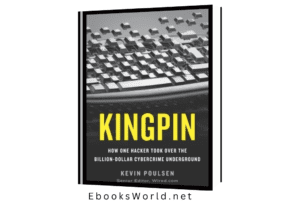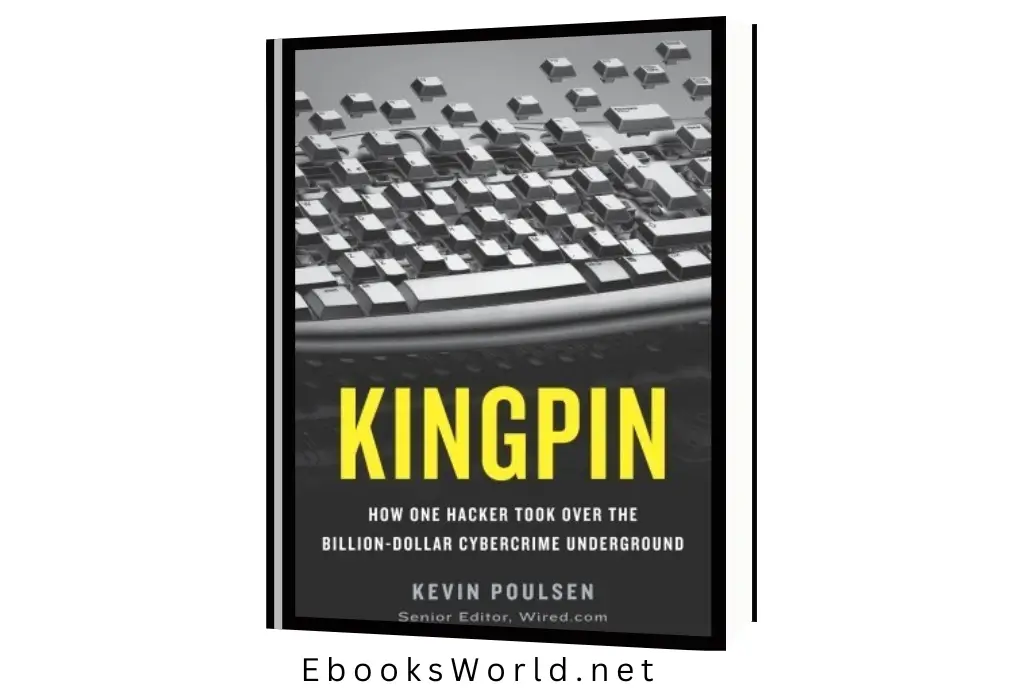Kingpin: How One Hacker Took Over the Billion-Dollar Cybercrime Underground

“Kingpin: How One Hacker Took Over the Billion-Dollar Cybercrime Underground” is a gripping account of the rise and fall of a notorious hacker, Max Butler, also known as Iceman. Authored by Kevin Poulsen, a former hacker turned journalist, the book explores the intricate world of cybercrime and the fascinating characters involved. Here’s a comprehensive summary in 1000 words:
Introduction:
The book opens with the arrest of Max Butler in 2007, marking the end of his reign as a formidable figure in the cybercrime underworld. Kevin Poulsen sets the stage by introducing the readers to the vast landscape of online criminal activities, highlighting the escalating sophistication of cybercrime and the stakes involved.
Background of Max Butler:
The narrative then delves into the early life of Max Butler, tracing his journey from a skilled programmer to a notorious hacker. Born in 1972, Butler displayed exceptional computer skills from a young age. His affinity for technology eventually led him into the world of hacking, where he honed his abilities in exploiting vulnerabilities and manipulating systems.
Evolution of Cybercrime:
Poulsen explores the evolution of cybercrime, emphasizing the shift from the early days of hacking for curiosity to the emergence of a highly organized, profit-driven cybercriminal underground. The narrative illustrates how the landscape transformed from individual hackers exploring systems for the thrill of it to organized groups engaging in large-scale financial fraud, identity theft, and other cybercrimes.
Max Butler’s Hacking Career:
The book chronicles Butler’s hacking career, detailing his involvement in various cybercrimes, including credit card theft, identity fraud, and the compromise of financial institutions. Butler’s technical prowess and strategic thinking allowed him to amass considerable wealth through his illicit activities. He became a central figure in the cybercrime underground, interacting with other hackers and criminals on forums and dark web platforms.
Formation of the CardersMarket:
One of the pivotal aspects of Butler’s story is the creation of CardersMarket, an online forum that served as a hub for cybercriminal activities. The book explores how Butler established and managed this platform, providing a space for hackers and criminals to collaborate, share information, and conduct illicit transactions. CardersMarket played a crucial role in the growth of cybercrime, facilitating the exchange of stolen data and the development of new hacking techniques.
Rivalries and Alliances:
As Butler’s influence expanded, so did the complexities of his relationships within the cybercrime community. The book details the rivalries and alliances that characterized this underground world, highlighting the competitive and often volatile nature of cybercriminal interactions. Butler’s interactions with other prominent figures in the hacking community, both as allies and adversaries, are explored in depth.
Law Enforcement Pursuit:
Parallel to Butler’s activities, the narrative follows the efforts of law enforcement agencies, particularly the FBI, in tracking and apprehending cybercriminals. The cat-and-mouse game between hackers and law enforcement adds a suspenseful layer to the story, with the authorities closing in on Butler as he continues to navigate the precarious landscape of the cybercrime underworld.
The Iceman Moniker:
Butler’s online persona, “Iceman,” becomes synonymous with his activities. The book explores the significance of this moniker and its symbolic representation of Butler’s cold, calculated approach to hacking and cybercrime. The narrative provides insights into the psychology of hackers and the personas they adopt to navigate the online world.
The Downfall:
The climax of the story unfolds as Butler’s activities attract the attention of law enforcement, leading to a series of events that ultimately result in his arrest. The book details the investigation, the strategies employed by law enforcement to apprehend Butler, and the legal proceedings that follow. Butler’s fall from grace marks the end of an era in the cybercrime underworld.
Conclusion:
In the concluding chapters, Poulsen reflects on the broader implications of Butler’s story, examining the challenges of combating cybercrime in an era of increasing digital interconnectedness. The book raises questions about the efficacy of law enforcement efforts and the evolving nature of cyber threats.
“Kingpin” is a riveting exploration of the dark and complex world of cybercrime, providing readers with a detailed and immersive account of Max Butler’s journey through the billion-dollar underground economy. Poulsen’s narrative skillfully combines technical details with human elements, offering a captivating glimpse into the motivations, rivalries, and consequences within the realm of cybercrime.







